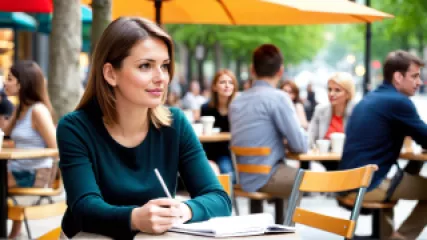My Journey to Reading Body Language Cues
Throughout my life, I have always been fascinated by human behavior and the intricate ways in which we communicate. From verbal exchanges to nonverbal cues, our interactions can reveal a wealth of information if we know where to look. One aspect that has captivated me the most is body language. The subtle movements, gestures, and expressions that accompany our words can provide valuable insights into a person's thoughts and feelings.
A Curious Beginning
My journey to mastering body language began unexpectedly. It was a sunny afternoon when I stumbled upon a book that would change my perspective forever. Tucked away in a dusty corner of the library, its title caught my attention: "The Silent Language: Understanding Nonverbal Communication." Intrigued, I decided to delve into its pages and explore this world of unspoken communication.
As I started reading, I learned that body language is not only essential for deciphering the emotions of others but also for understanding ourselves better. Our own gestures and postures can reveal hidden emotions, providing us with valuable self-awareness. This realization sparked a deep curiosity within me, and I set out on a mission to unravel the secrets of interpreting body language.
The Art of Observation
One of the fundamental skills in reading body language is the art of observation. To truly understand the unspoken messages conveyed through someone's body, I had to develop a keen eye for detail. I began practicing at every opportunity, observing people in various environments.
Whether it was in a bustling café or a quiet park, I would sit back and watch as individuals interacted with one another. I paid close attention to their facial expressions, hand movements, and even the way they positioned their bodies. By observing these subtle cues, I started to piece together a puzzle of human behavior.
I soon realized that body language is a universal language. Although cultural nuances may exist, certain gestures and expressions transcend borders. A smile, for example, can convey warmth and friendliness in any part of the world. This universality fascinated me and motivated me to delve deeper into the subject.
Decoding Nonverbal Cues
As my understanding of body language grew, I began to recognize patterns in the way people communicated nonverbally. Certain movements and gestures carried specific meanings, providing valuable insights into a person's thoughts and intentions.
For instance, crossed arms often indicate defensiveness or discomfort, while open palms suggest honesty and receptiveness. Eye contact can reveal interest or lack thereof, and microexpressions can betray concealed emotions. By honing my ability to interpret these cues, I gained a newfound understanding of the unspoken aspects of human interaction.
However, it is essential to remember that body language should not be interpreted in isolation. It is a nuanced art that requires context and consideration of multiple factors. The meaning behind a particular gesture may vary depending on the situation, cultural background, and individual personality.
Exercises to Strengthen Body Language Skills
Alongside my observational practice, I incorporated various exercises to strengthen my body language skills. These exercises helped me refine my ability to interpret nonverbal cues more accurately.
- Mirror Exercise: Stand in front of a mirror and observe your own body language. Pay attention to your facial expressions, posture, and hand movements. Notice how certain emotions or thoughts are reflected in your nonverbal cues.
- Role Play: Engage in role-playing scenarios with a friend or partner. Take turns playing different characters and pay attention to the nonverbal cues each person displays. This exercise allows you to practice interpreting body language in real-time.
- Group Observation: Sit in a public space and observe a group of people interacting. Focus on their body language and try to identify any underlying dynamics or emotions. Discuss your observations with a friend to gain different perspectives.
- Video Analysis: Watch videos or movies without sound and focus solely on the actors' body language. Analyze their gestures, facial expressions, and postures to understand the emotions they are conveying.
These exercises not only enhanced my ability to read body language but also made me more aware of my own nonverbal communication. I discovered that by consciously adjusting my body language, I could influence the way others perceive me and improve my overall communication skills.
A Lifelong Journey
Mastering body language is an ongoing journey that continues to fascinate and challenge me. The more I explore this intricate realm of communication, the more I realize how much there is still to learn. Each interaction presents an opportunity to deepen my understanding of nonverbal cues and refine my interpretation skills.
Moreover, as I became more proficient in reading body language, I noticed a positive impact on my relationships. The ability to pick up on subtle cues allowed me to connect with others on a deeper level, fostering empathy and understanding.
Conclusion
My journey to reading body language cues has been an enriching and transformative experience. It has taught me the importance of paying attention to the unspoken aspects of communication and has provided me with valuable insights into human behavior.
By incorporating observation, practice, and self-reflection, I have developed a skill set that allows me to decipher the hidden messages conveyed through body language. The ability to interpret nonverbal cues has not only deepened my understanding of others but has also empowered me to be more aware of my own communication.
As I continue my lifelong journey of mastering body language, I am excited to unlock even more secrets hidden within the silent language that connects us all.






